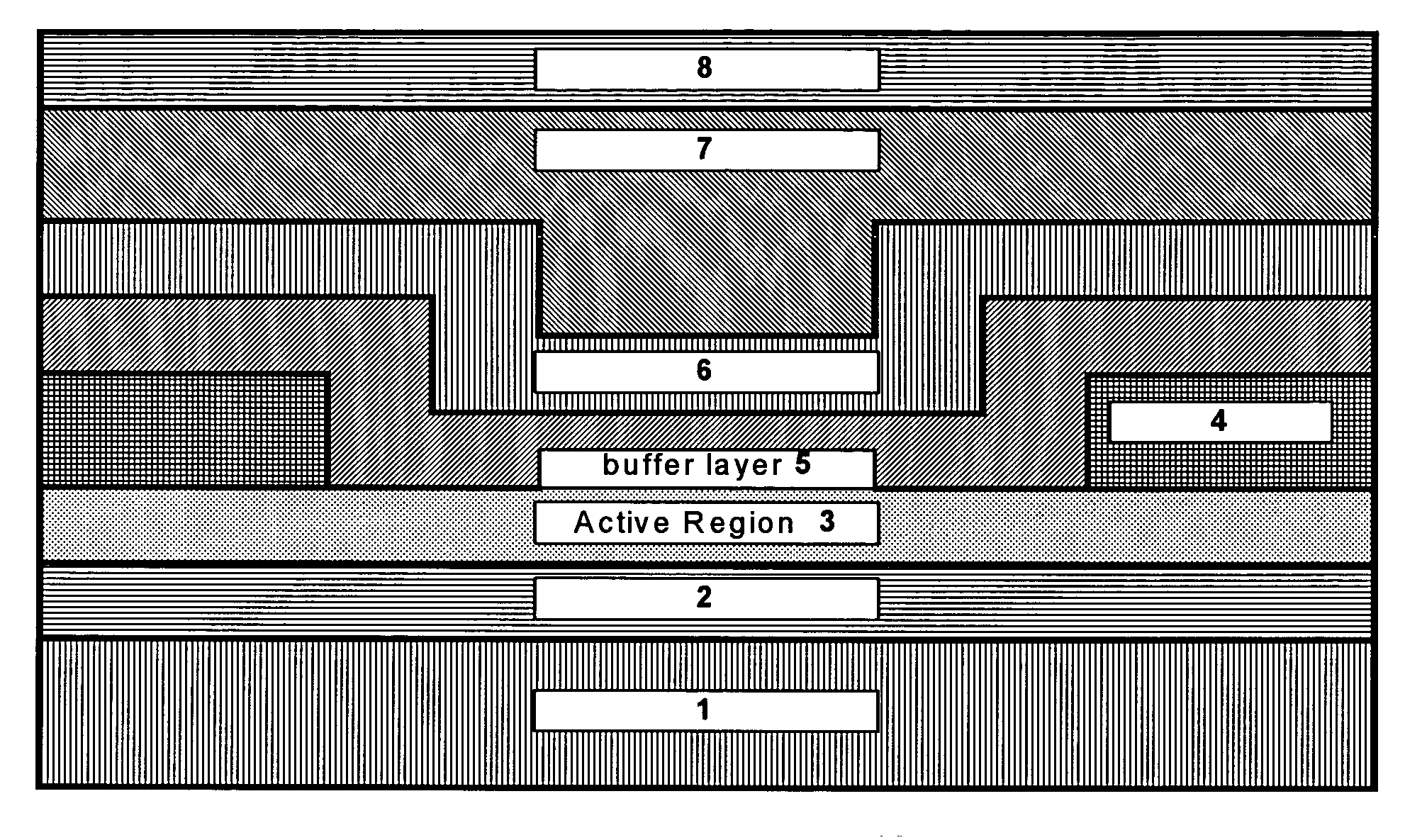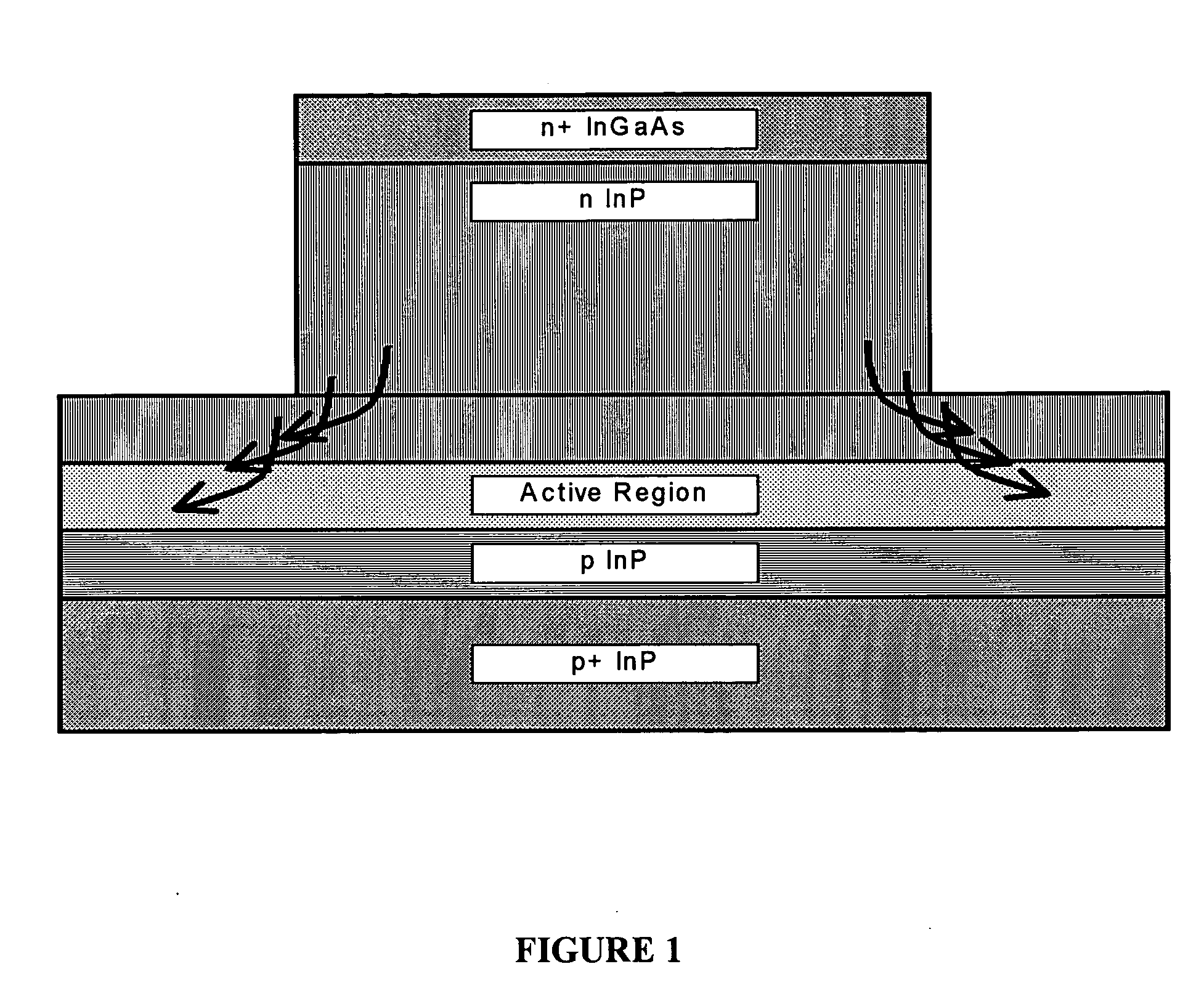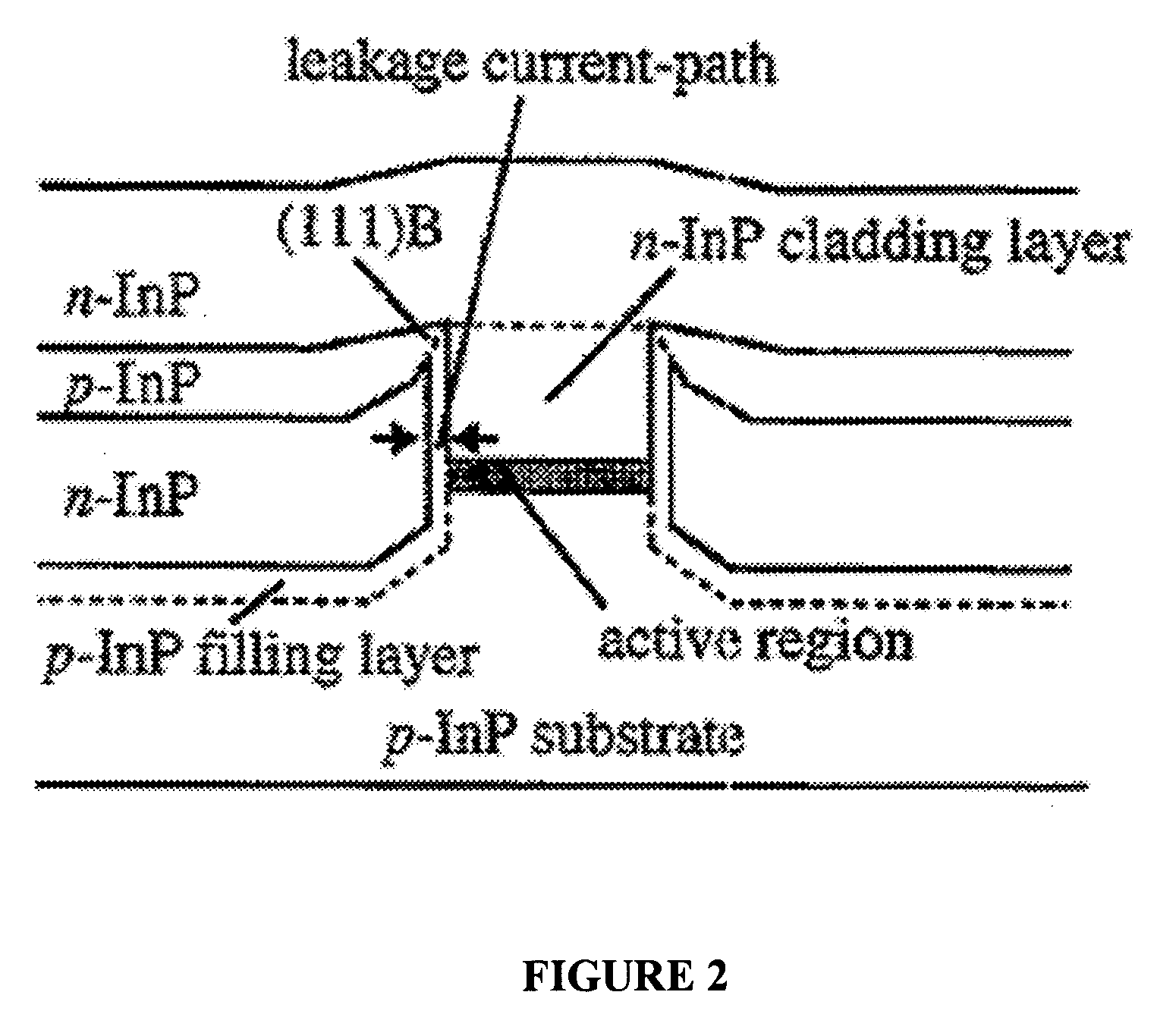Laser diode structure with blocking layer
a diode and laser technology, applied in semiconductor lasers, laser details, electrical equipment, etc., can solve the problems of reducing the efficiency of the threshold current and slope, reducing the performance and reliability of the device, and reducing the efficiency of the laser. the effect of reducing the cost and time of production and easing the manufacturing method
- Summary
- Abstract
- Description
- Claims
- Application Information
AI Technical Summary
Benefits of technology
Problems solved by technology
Method used
Image
Examples
Embodiment Construction
[0031] The present invention provides a self-aligned laser structure that can be fabricated on a p-substrate and provides a means for limiting the leakage current thereby improving the overall efficiency of the structure. The waveguide laser structure comprises a first series of layers deposited in sequence upon a p-InP, p-GaAs or p-GaN substrate or other form of p-substrate, wherein these layers form the p-clad layer. An active layer is subsequently deposited upon this first series of layers. A blocking layer of insulating or semi-insulating material is deposited upon the active layer, wherein this blocking layer has a trench formed therein, wherein this semi-insulating layer or layers are epitaxially deposited. A semi insulating material forming the blocking layer is defined as a material that inhibits electron or hole currents by trapping carriers. The blocking layer provides a means for limiting current flow therethrough, thereby reducing leakage current. Upon the blocking layer...
PUM
 Login to View More
Login to View More Abstract
Description
Claims
Application Information
 Login to View More
Login to View More - R&D
- Intellectual Property
- Life Sciences
- Materials
- Tech Scout
- Unparalleled Data Quality
- Higher Quality Content
- 60% Fewer Hallucinations
Browse by: Latest US Patents, China's latest patents, Technical Efficacy Thesaurus, Application Domain, Technology Topic, Popular Technical Reports.
© 2025 PatSnap. All rights reserved.Legal|Privacy policy|Modern Slavery Act Transparency Statement|Sitemap|About US| Contact US: help@patsnap.com



